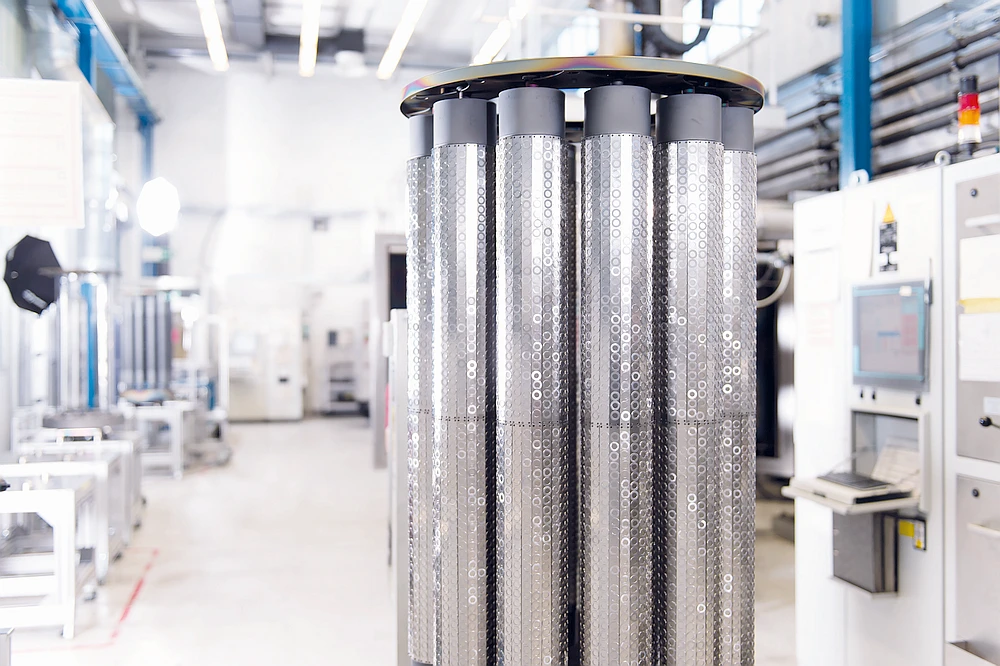Diamond-like carbon coatings (DLC)
The DLC coating is an extremely hard amorphous diamond-like carbon layer with excellent mechanical and chemical properties. It is ideal for use in tribological systems in which components are moved against each other and friction and wear must be kept to a minimum. The coating is also chemically resistant and biocompatible, which offers a very wide range of applications. Depending on the manufacturing process, deposition conditions and composition, the properties of the coatings can be adapted over a wide range. These diverse possibilities for varying the coating properties have led to a large number of different carbon coatings that are used in a wide range of applications in the automotive industry, in mechanical engineering and in tool and medical technology.
Product features
- Wear protection against abrasion and adhesion (especially for non-ferrous metals such as aluminum)
- Reduced wear on the counter body
- Very good running-in and smoothing behavior (e.g. for precision components)
- Friction reduction (especially with minimal or even dry lubrication)
- Corrosion protection
- Chemical resistance
- Food compatibility, biocompatibility

High-performance coating for extreme tribological requirements
An extremely hard diamond-like carbon layer with very low coefficients of friction. It is perfectly optimized for use in tribological systems where components move against each other and friction and wear must be kept low. The coating is also chemically resistant and biocompatible, making it suitable for a very wide range of applications.
Areas of application
Valve components, plain bearings, shafts or gear wheels in gearboxes, clutches, rocker arms, camshafts, piston pins
Drive elements such as gears, shafts, axles and chains, sealing elements such as sliding seals and ball valves, bearing elements such as plain bearings, ball bearings and guide elements, piston/cylinder combinations such as shock absorbers, pistons for motors, pumps and compressors
Prototype tools, forming tools, cutting and punching tools, pressing tools
Displays, jewelry, watches, bicycles
Process description and properties
PVD (physical vapor deposition):
PVD processes are based on purely physical mechanisms of action in which a material vapor is usually evaporated or atomized from a source and condenses on the surface of the substrate. A wide range of materials can be deposited using the PVD process. By adding reactive gases, nitrides, oxides and carbides can also be formed on the surface.
CVD (chemical vapor deposition):
Chemical vapor deposition (CVD) is a coating process in which process gases are split near or on the surface of the substrate. The layer then grows by chemisorption on the surface. The CVD process is often used in combination with the PVD process in order to achieve an optimized coating by combining different material systems.
